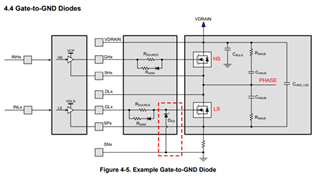hello Ti:
we learn the the TVS diodes can help with negative transient spikes.So we add a SMF15CA.You can my schematic diagram.
When I get my pcb.,I test it .The motor cann't run normally .Even one mosfet burned and one mosfet is shorted (g to s).But I
remove these diodes,everything goes well.Since that we have test our last version pcb for months which didn't have these
TVS diodes and our idrve is the smalles value.So I am sure that the TVS diodes is the reason.
Is my model selection wrong? Will zener diodes or one-way TVS be better?
Looking forward to your reply
thanks
shengzhong




